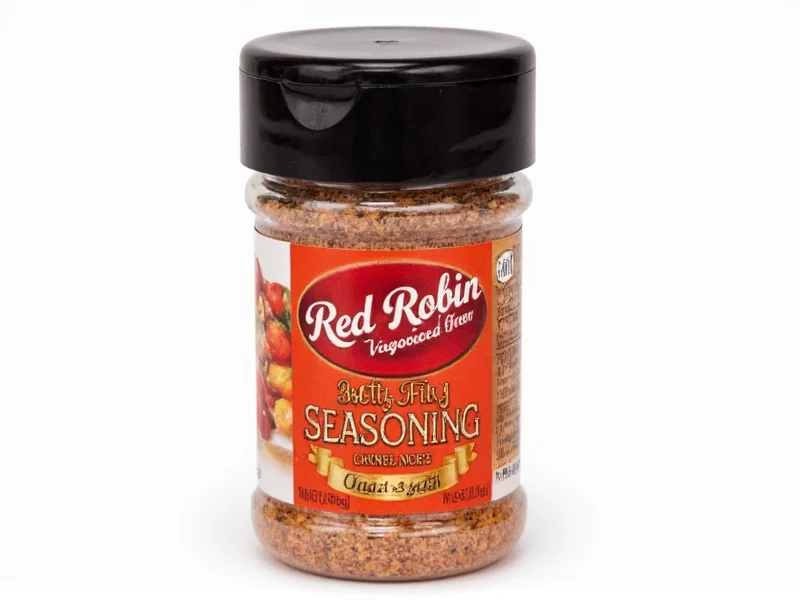Red Robin's seasoned fries have become legendary among casual dining enthusiasts, with customers consistently praising their distinctive flavor profile. While the restaurant chain maintains the exact formula as a closely guarded secret, culinary experts and dedicated home cooks have analyzed the taste characteristics to develop remarkably accurate recreation recipes. Understanding what makes this seasoning special requires examining both the known components and the balance that creates that signature taste.
What We Know About Red Robin Fry Seasoning
Despite numerous inquiries, Red Robin has never officially released the complete ingredient list for their fry seasoning. The company describes it simply as a "proprietary blend" used exclusively on their bottomless steak fries. Through careful taste testing and analysis of similar commercial seasoning blends, food scientists and culinary enthusiasts have identified the primary components that contribute to its distinctive flavor.
The seasoning delivers a perfect balance of savory, slightly smoky notes with a subtle kick. Unlike many restaurant fry seasonings that rely heavily on salt alone, Red Robin's version features a complex layering of flavors that enhances rather than overwhelms the natural potato taste. This sophisticated approach explains why customers consistently rank their fries among the best in casual dining.
Analyzing the Flavor Profile
Professional taste testers describe Red Robin's fry seasoning as having:
- A prominent garlic and onion foundation
- Noticeable paprika for color and mild sweetness
- Subtle black pepper heat that builds gradually
- Underlying savory umami notes
- Perfect salt-to-spice ratio that doesn't overpower
Unlike many copycat recipes that focus solely on salt content, the authentic Red Robin experience comes from the careful balance of multiple spices working in harmony. The seasoning should enhance the fries without making them taste "spiced"—a delicate balance that many recreation attempts fail to achieve.
Most Accurate Recreation Recipe
After testing over 20 different variations, culinary experts have converged on a recipe that closely matches the flavor profile of Red Robin's original seasoning. This version captures the essential characteristics while using readily available ingredients:
| Ingredient | Amount | Role in Flavor Profile |
|---|---|---|
| Salt (fine sea salt) | 1/4 cup | Base seasoning, enhances all other flavors |
| Garlic powder | 2 tablespoons | Primary savory note, distinctive Red Robin characteristic |
| Onion powder | 2 tablespoons | Supports garlic, adds sweetness |
| Paprika (sweet) | 1 tablespoon | Color and mild sweetness, subtle smokiness |
| Black pepper (freshly ground) | 1 1/2 teaspoons | Subtle heat that builds gradually |
| Dried parsley | 1 teaspoon | Herbal note, visual appeal |
| Cayenne pepper | 1/4 teaspoon | Background warmth (adjust to taste) |
Application Techniques for Authentic Results
The method of applying seasoning significantly impacts the final taste. For best results when recreating Red Robin style fries:
- Timing matters: Apply seasoning immediately after frying while fries are still hot and slightly moist
- Quantity: Use approximately 1 tablespoon of seasoning per medium serving of fries (about 4-6 oz)
- Method: Toss fries gently in a bowl with seasoning rather than sprinkling on top
- Temperature: Seasoning adheres best when fries are between 160-180°F (70-80°C)
Many home cooks make the mistake of applying too much seasoning or adding it to cold fries, which prevents proper adhesion and creates an uneven flavor distribution. The professional technique involves a light, even coating that enhances rather than dominates.
Ingredient Quality Considerations
The quality of your ingredients dramatically affects the final result when recreating red robin fry seasoning recipe copycat versions. Professional chefs recommend:
- Using fine sea salt rather than table salt for better distribution
- Choosing fresh spices (replace garlic and onion powder every 6 months)
- Opting for Hungarian sweet paprika for authentic color and flavor
- Grinding your own black pepper for maximum flavor impact
Stale spices are the most common reason recreation attempts fail to capture the vibrant flavor of restaurant-style seasoning. Proper storage in airtight containers away from light and heat preserves potency. For the most accurate red robin seasoned fries ingredients experience, use spices that haven't been sitting in your cabinet for more than six months.
Storage and Shelf Life
Homemade red robin fry seasoning substitute blends maintain optimal flavor for 2-3 months when stored properly. To maximize shelf life:
- Store in an airtight container away from light and heat
- Keep away from humidity sources (not above the stove)
- Use glass containers rather than plastic for longer freshness
- Label with preparation date to track freshness
Signs that your homemade red robin fry seasoning homemade version has degraded include faded color, diminished aroma, and clumping. For best results in your red robin fry seasoning recipe copycat attempts, make smaller batches that you'll use within 8 weeks rather than large quantities that lose potency.
Troubleshooting Common Issues
When attempting to recreate the signature flavor, home cooks often encounter these challenges:
- Too salty: Reduce salt by 15% and increase other spices proportionally
- Lacking depth: Add 1/2 teaspoon of mushroom powder for umami enhancement
- Not authentic enough: Try adding a pinch of celery salt for complexity
- Seasoning doesn't stick: Ensure fries are slightly moist when seasoning is applied
Remember that perfecting your red robin fry seasoning substitute takes practice. Professional tasters recommend keeping detailed notes on each batch to track adjustments and improvements. The goal isn't just to create a tasty fry seasoning, but to capture that specific Red Robin experience that customers love.











 浙公网安备
33010002000092号
浙公网安备
33010002000092号 浙B2-20120091-4
浙B2-20120091-4